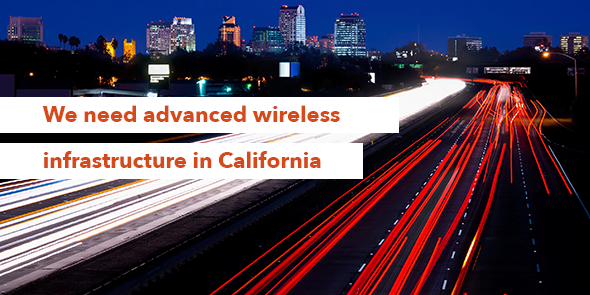In 1996, movie rental stores were ubiquitous and cell phones were few and far between. The modern Internet was unimaginable – web pages were largely text-based and could take almost a minute to load. Google wouldn’t even exist for another two years.
We’ve made incredible strides since then, and our infrastructure has made incredible strides too. Moving forward, California must continue to support and expand the infrastructure needed for the 21st century and beyond.
Read below for just some of the ways that investments in 21st century communications infrastructure will create huge economic and social benefits for all Californians.
Public Services and Safety

Smart city infrastructure relies on connectivity and can create efficiencies in water, power, transportation, and waste management. For example, Cleveland and Cincinnati have implemented successful waste-collection programs with the help of radio-frequency identification (RFID) tags on garbage and recycling bins, cutting operating costs and increasing recycling rates.
In the future, smart city sensors installed across urban infrastructure will create enormous quantities of data. Optimizing such data can vastly improve government services and reduce inefficiency, freeing government resources to be repurposed to other priorities. Such data could also be utilized for consumer applications, from painlessly locating available parking spaces to serving as the backbone for autonomous vehicles.
Learn more by reading the full report
California’s Future
For California to realize the social and economic benefits of emerging and future communications technoogies, it must have an equally advanced communications infrastructure to support them. As other states and countries take steps to facilitate network upgrades, California’s communications infrastructure will need to be updated or risk being unprepared for future requirements placed upon it.
With the coming wave of digital demand, investments in 21st century infrastructure are needed to seize the benefits that new communications technologies offer. To meet these shifting demands and to keep California economically competitive, policies can be put in place that will give communications providers greater flexibility to innovate and reduce barriers to investment.